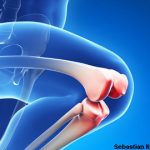Patients are usually referred to outpatient therapy after the two-week surgical follow-up visit. As outlined in the BWH protocol, progression to each subsequent phase can happen only if the patient is able to achieve—without pain—specific range-of-motion (ROM) goals. For example, patients progress to early Phase II only if they tolerate the passive ROM (PROM) program; have achieved at least 90° PROM forward flexion and elevation in the scapular plane; 45° PROM external rotation in the scapular plane; and at least 70° PROM internal rotation in the scapular plane measured at 30° of abduction.
Careful progression through each of the early and late portions of each phase hopefully leads to the advanced strengthening phase, which begins after 12 weeks to allow for soft tissue healing, adequate ROM and initial strength. Some patients, such as those with RA, may never reach Phase IV and may need to concentrate on functional activities between “the thighs and the eyes,” said Gall.
Online Resources for Professionals
Gall recommends these Web resources and protocols for rehabilitation professionals.
The Game-Changer
The final portion of the session focused on reverse total shoulder arthroplasty (rTSA), which Dr. Pennington called “a complete game changer.” Before its Food and Drug Administration approval in 2006, surgeons could offer little beyond injections to temporarily relieve pain in patients with glenohumeral arthritis associated with irreparable rotator cuff damage. Pioneered by Paul Grammont, the prosthesis reverses the orientation of the shoulder joint, placing a socket where there was a ball and a ball where there was a socket. The joint’s center of the rotation is moved medially and inferiorally; its stability and mobility become dependent upon the deltoid and periscapular muscles. “You can raise your arm with just your deltoid: it’s fantastic,” said Dr. Pennington.
However, the procedure comes with a price. Complication rates are twice those of conventional TSA. Because it alters anatomy, rTSA puts additional forces on the scapula and humerus and is not a stable construct. Infection rates are also higher. Its limited lifespan (six to 11 years at present) means that it should only be offered to those 65 and over, said Dr. Pennington.
The procedure introduces additional precautions into the rehabilitation protocol, added Gall. Although the protocol still follows a four-phase design, the therapy has “a slower start and a slower progression,” she said. Patient and family education regarding positioning and patient activity are necessary for a successful outcome. Some of the differences from the conventional TSA protocol include longer use of the immobilizer; avoiding internal rotation, or hands behind the back; introducing periscapular and deltoid isometrics to regain upper back and shoulder girdle strength; using biofeedback to help recruit scapula or deltoid muscles; and paying special attention to customizing the protocol to each individual. In addition, therapists should be alert to possible acromion fracture, symptoms of which include insidious pain, tenderness and pain over the superior aspect of the acromion, pain with deltoid activity, and sudden loss of motion. Prognosis can still be good, although it may take three or more months for such a fracture to heal, she said.


